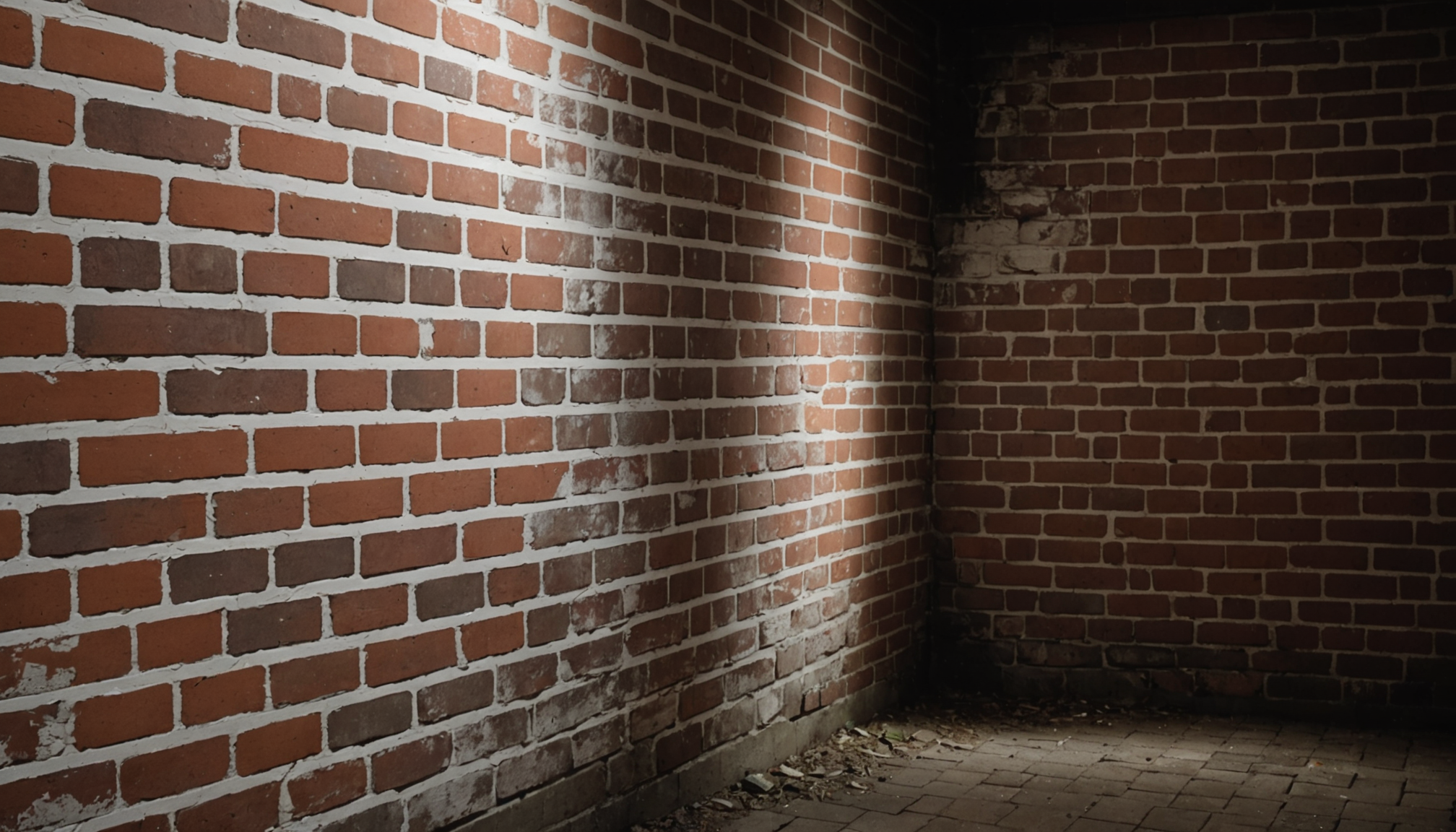When examining any basement, identifying common issues is an essential first step to ensuring the space remains safe, functional, and free from long-term problems. By recognizing and addressing these commonplace concerns early, property owners can safeguard their investment and potentially mitigate expensive repairs or renovations down the line.
Basements, given their positioning beneath ground level, are particularly susceptible to a variety of typical issues. The most frequent concerns can be categorized into structural problems, moisture influence, and other environmental effects that might not be immediately visible. Here’s an examination of some of the most prevalent issues to watch for when you inspect a basement.
One of the primary issues is water infiltration. Water can enter through foundation walls, floors, or even improperly sealed windows, creating a breeding ground for mold and resulting in the degradation of structural materials. Here are signs of moisture problems:
- Discoloration or staining on walls or floors.
- The presence of efflorescence, a white powdery residue left behind by evaporating water.
- A musty odor indicating potential mold growth.
Beyond moisture, the structural integrity of the basement is crucial. Look for visible cracks in walls, floors, or the ceiling, as these can indicate shifting foundations or other structural stresses. Pay special attention to:
- Horizontal cracks in the foundation, which may suggest potential bowing or collapsing walls.
- Vertical cracks, often resulting from natural settling but still worth monitoring closely.
In older homes, foundational shifts could be an indication of deeper issues that, if left unchecked, might compromise the entire structure and affect overall safety. Thus, regular inspections are key.
Another critical area involves assessing the condition of any internal systems, especially if the basement is used as a living space or garage. Electrical and plumbing systems should be inspected to confirm they comply with current safety standards. These components can also be impacted by the moisture levels and temperature fluctuations typical in basement environments.
The following table provides a quick comparison of issues based on their origin and potential impact:
| Issue | Origin | Potential Impact |
| Water Leaks | Foundation and Seal Failures | Mold Growth, Material Deterioration |
| Structural Cracks | Settling, Earth Shifts | Structural Compromise |
| Electrical Issues | Dated Wiring, Moisture Ingress | Fire Hazard, Safety Risk |
The pursuit of energy savings and a secure living environment makes it imperative to regularly inspect basements. By maintaining vigilance and promptly addressing any symptoms of these common issues, homeowners can ensure both energy efficiency and the structural integrity of their homes, providing peace of mind and a safe environment for all inhabitants. Regular inspection routines, ideally once or twice a year, complement professional assessments to manage potential risks effectively.
assessing structural integrity
When conducting a thorough basement inspection, understanding the structural integrity is of paramount importance. This assessment not only ensures the safety of the space but also helps in maintaining the overall stability of the home. Here’s a step-by-step guide to help you evaluate the structural integrity of your basement effectively:
-
Examine the Foundation Walls: Begin the inspection by closely examining all visible foundation walls for any signs of damage or stress.
- Look for horizontal or stair-step cracks, particularly near corners or windows, which might indicate foundation movement.
- Check for bulging or bowing walls, as these suggest that the wall is under external pressure and potentially losing its stability.
-
Inspect Support Beams and Columns:
- Assess whether support beams and columns are straight and free from any noticeable bending or warping.
- Ensure all joints and connections between beams, columns, and walls are secure and not showing signs of separation or displacement.
-
Look for Signs of Settling:
- Observe any gaps or misalignments in door and window frames, as this can indicate foundation settling.
- Check for sloping floors which may suggest uneven settling of the foundation.
-
Evaluate the Concrete Floor:
- Examine the basement floor for any visible cracks, especially large or expanding ones, as these may signal underlying pressure or foundation movement.
- Look for any signs of heaving, where parts of the slab may be buckling upwards, potentially affecting the structural soundness.
-
Check Load-bearing Walls:
- Identify and evaluate load-bearing walls within the basement to ensure they are intact and free from extensive cracking or damage.
- Confirm that any renovations or modifications to these walls have been done properly and do not compromise the structural integrity.
-
Observe for Rust or Corrosion:
- Inspect any exposed metal components such as rebar in concrete, steel beams, or brackets for rust or corrosion that could weaken structural elements over time.
By systematically assessing each component of your basement’s structure, you can identify potential weaknesses and address issues before they escalate. Regular inspections can lead to early detection of structural problems, enhancing the safety and longevity of your home. Furthermore, practicing these routine checks can contribute to long-term energy savings by ensuring that all foundational elements are functioning optimally, preventing unnecessary loss of heat or infiltration of moisture, which can elevate energy consumption.
checking for moisture and leaks
Basements are notorious for moisture-related issues, primarily due to their subterranean location, which naturally subjects them to water intrusion and humidity. When conducting a thorough inspection of your basement, detecting moisture and potential leaks early on is critical, as these problems can lead to significant damage if left unchecked.
Begin by examining all the critical entry points for moisture. Windows, doors, vents, and any other openings should be carefully inspected for signs of improper sealing or wear, which could allow water to seep through. Efflorescence—the white, powdery substance often found on concrete or masonry walls—is a clear indicator of moisture moving through the walls and depositing salt residue as it evaporates.
Next, consider the condition of the walls and floors. Look for areas of discoloration or staining, particularly near the base of walls where water might pool. Soft spots or water staining in these areas are indicative of persistent water exposure. Take note if there’s a musty smell present, as it often suggests mold growth, which thrives in dark, damp environments typical of a neglected basement.
Another vital aspect of moisture inspection focuses on evaluating drainage systems. Ensure that the exterior drainage systems, such as gutters and downspouts, are functioning correctly and directing water away from the foundation. Inside the basement, a sump pump, if present, should be inspected to guarantee it is operational, as this system is crucial for removing accumulated water.
The presence of adequate ventilation and insulation is also significant in moisture management. Proper ventilation helps reduce humidity levels, making it harder for mold to thrive, while well-maintained insulation can prevent the condensation issues that arise when warm, moist air meets cooler basement surfaces.
Lastly, check for leaks around any plumbing fixtures. Pipes often run through basements, and any signs of corrosion, puddling, or dripping should be addressed immediately to prevent water damage and ensure safety. Catching these issues early can prevent costly repairs, contribute to energy savings by reducing damp-induced cooling or heating inefficiencies, and ultimately uphold the structural integrity of the space.
By diligently inspecting for moisture and leaks, homeowners can maintain a healthy, safe, and energy-efficient environment within their basements, preventing the escalation of minor problems into major disturbances.
evaluating electrical and plumbing systems
When assessing the systems embedded within your basement, a meticulous evaluation of both electrical and plumbing setups is necessary to ensure the safety and efficiency of these essential utilities. Neglecting these evaluations can lead to severe safety risks and increased costs due to inefficiencies or hazards.
Start your assessment with the electrical system, which plays a crucial role in both the functionality and safety of the basement. Inspect all visible wiring for signs of wear, fraying, or damage. Ensure all outlets and switches are securely attached and functioning correctly. Consider whether the existing electrical setup can support current and future energy needs, particularly if the basement is utilized as a garage, workspace, or living area. Outdated or insufficient electrical systems can pose fire hazards and might not meet modern building codes, making upgrades necessary for both safety and energy savings.
Additionally, check for any moisture damage around electrical installations, as water can cause shorts or corrosion, presenting a significant safety issue. Interactions between moisture and electricity are extremely dangerous, necessitating precautionary measures such as installing ground fault circuit interrupters (GFCIs) to minimize risk.
Turning to the plumbing system, begin by examining all visible pipes and fixtures for signs of leaks, corrosion, or deterioration. Even minor leaks can lead to substantial damage if overlooked, fostering mold growth or compromising the integrity of surrounding materials. Inspect connections to ensure they are tight and free from water seepage.
Moreover, assess the hot water heater and ensure it is operating efficiently. Any rust or puddles around the base can signal a need for maintenance or replacement. Regularly flushing the tank helps maintain performance and prolongs its lifespan, providing both cost-effective maintenance and ensuring hot water availability.
If your basement plumbing connects to household appliances like washers or bathrooms, verify that these connections and hoses are in excellent condition, with no cracks or weak spots. Given the potential for hidden leaks, it’s a good practice to periodically check water bills for unusual increases that may suggest undetected issues.
Finally, if your basement features drainage systems or sump pumps, confirm they are functioning properly. A sump pump is critical in preventing basement flooding and subsequent water damage, and it should be checked for operational soundness, particularly before seasons when heavy rainfall is common.
By regularly inspecting both the electrical and plumbing systems in your basement, you can prevent small issues from becoming major catastrophes. These evaluations enhance safety, lead to significant energy savings over time, and maintain the integrity of your entire home. Keeping a vigilant eye on these crucial aspects ensures your basement remains a safe and functional space, facilitating peace of mind and protecting your investment.
inspecting insulation and ventilation
An important aspect of a basement inspection is ensuring that insulation and ventilation systems are in optimal condition. Proper insulation plays a crucial role in maintaining energy efficiency by preventing heat loss during colder months and keeping the space cool in warmer conditions. Begin by examining the types and conditions of insulation materials used in the basement. Common materials include fiberglass batts, foam boards, and spray foam. Each has its benefits, and it’s essential to confirm whether the current materials meet your needs for both thermal resistance and moisture control.
Check for areas where insulation may have deteriorated or become displaced. Gaps or compressions in insulation can significantly reduce its effectiveness, leading to drafts, increased energy bills, and potential moisture problems. Pay special attention to areas around doors, windows, and foundational walls, where breaches in thermal barriers are most likely.
On the ventilation front, adequate airflow is necessary to manage humidity levels within the basement, thereby reducing mold growth and preserving a healthy environment. Inspect any existing ventilation systems, such as vents, exhaust fans, or air exchanges, which should be functional and free from obstructions. Ensure these systems are adequately serving the entire basement space; dead zones with little air circulation can become hotbeds for mold and mildew.
Furthermore, contemplate installing a dehumidifier if moisture is a persistent issue, as this can help maintain optimal humidity levels and result in substantial energy savings. A well-ventilated basement prevents the buildup of musty odors and maintains indoor air quality, enhancing both comfort and safety.
In summary, a comprehensive basement inspection that covers insulation and ventilation is fundamental for maintaining a safe and energy-efficient home environment. By routinely checking these aspects, you prevent unexpected repair costs, ensure energy savings, and safeguard your living space from common basement-related issues. Whether your basement serves as additional living quarters, a workspace, or a storage area, these efforts foster a comfortable and functional space while protecting your investment.


